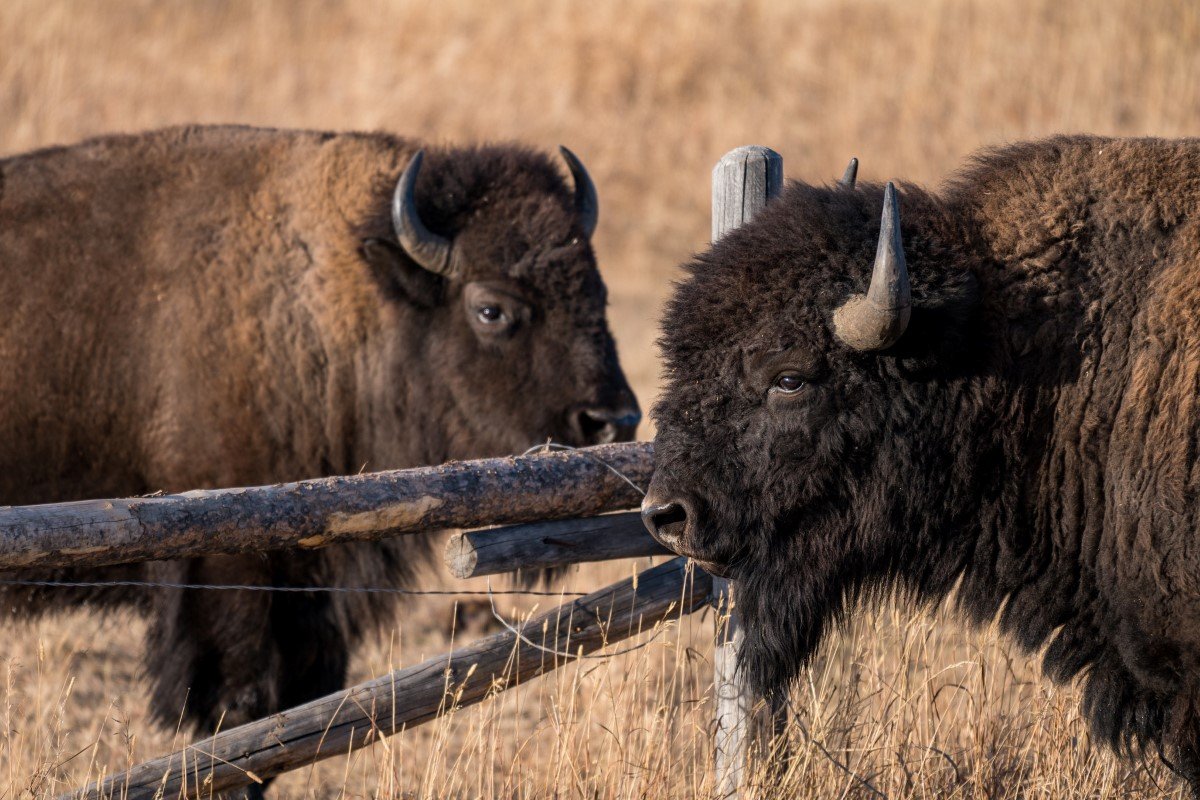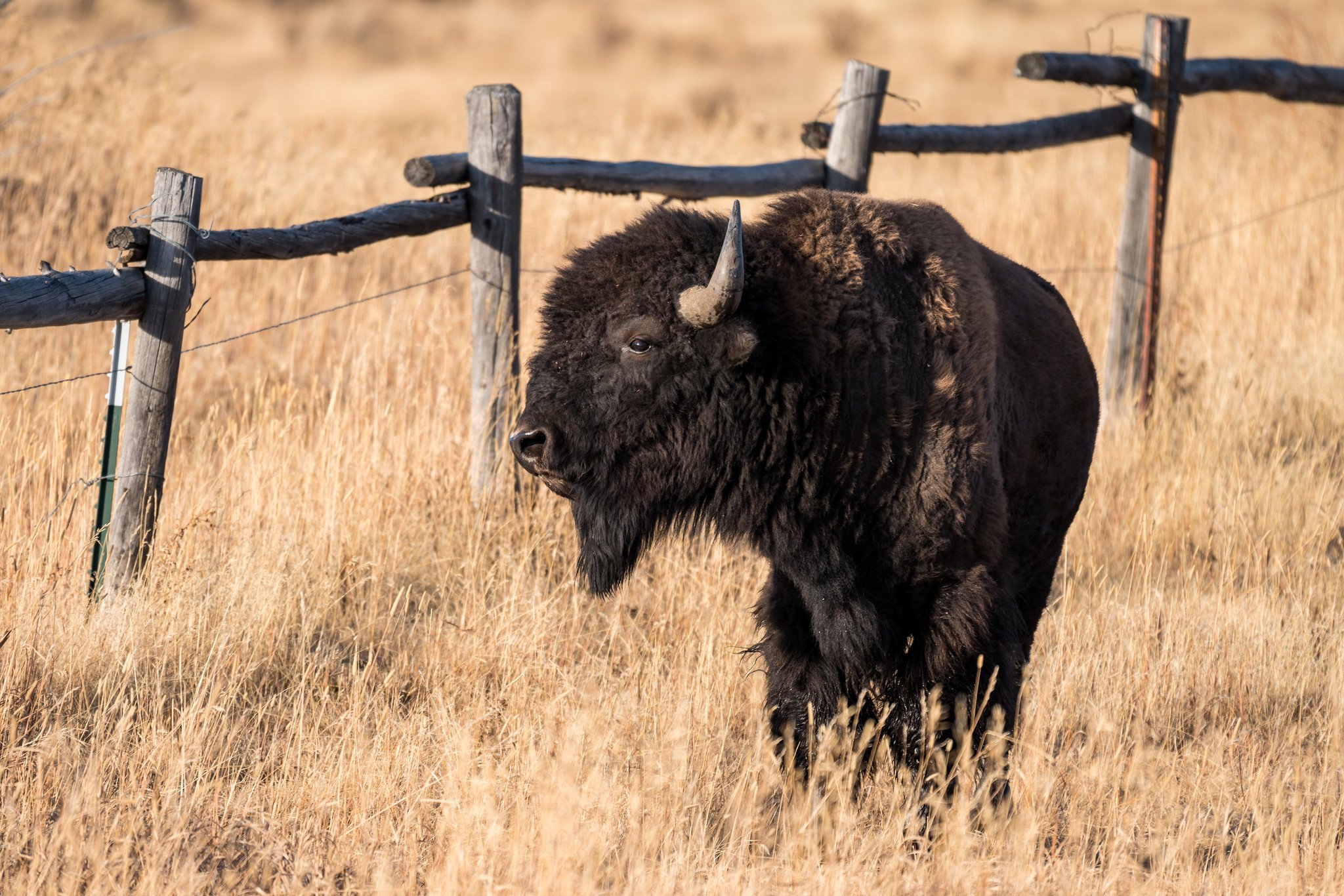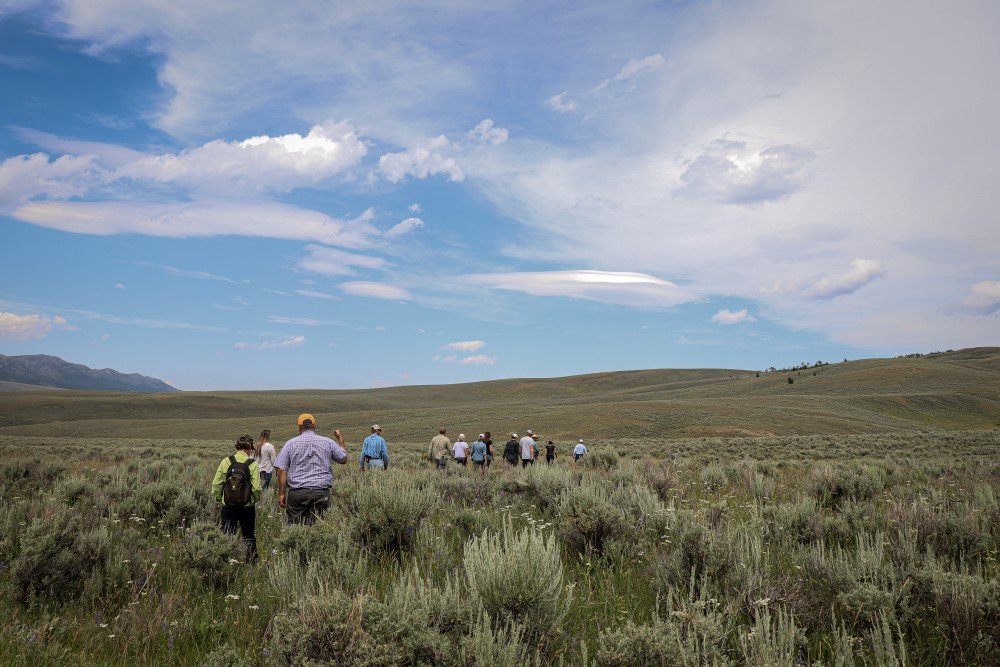
Preventing Wildlife Conflicts
Greater Yellowstone is a dynamic region, home to a vast array of iconic wildlife, thriving communities, and National Park-bound visitors. Herds of elk live alongside herds of cattle, recreators share public lands with grizzly bears and bighorn sheep, and bison and deer browse front yards and gardens.
Living alongside wild animals is part of what makes life in this region so special, and it comes with the responsibility to embrace the challenges of doing so.
Where people and wildlife share the landscape, opportunities for conflict arise. As humans push farther into wild spaces, and as formerly weakened populations of wild animals rebound, conflict and competition grow increasingly common. Whether it’s livestock depredation, risks to human safety, or wildlife becoming conditioned to human food sources, conflict inhibits wild animals from meeting their basic needs in the short term and threatens the ability of people and wildlife to coexist in the long term.
Human-wildlife conflict is a complex challenge that requires an equally complex and nuanced set of solutions. The Greater Yellowstone Coalition uses a wide variety of tools to prevent conflict, build social tolerance, and make coexistence possible. Among our many programs and partnerships, we support range rider programs that benefit ranchers and wild animals alike, install bear-proof food storage bins in campgrounds, support bison-proof fencing in gateway communities, and invest in transformative relationships that honor diverse perspectives and acknowledge the lived experiences of people across the landscape.
How we’re preventing wildlife conflicts.
Bear-Proofing Campgrounds
Leading Innovative On-the-Ground Partnerships
Promoting Bison Coexistence
Collaborating for Conservation in the Ruby Valley
Join us and become an advocate for Greater Yellowstone.
Discover the stories and science of Greater Yellowstone with our podcast.
Check out Voices of Greater Yellowstone for episodes on grizzly bears, climate change, geology, and more!





